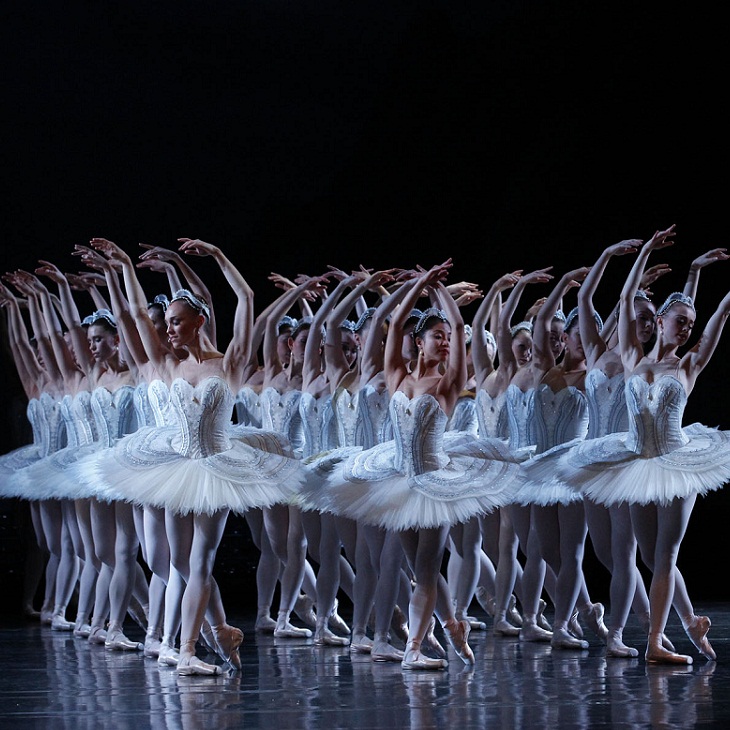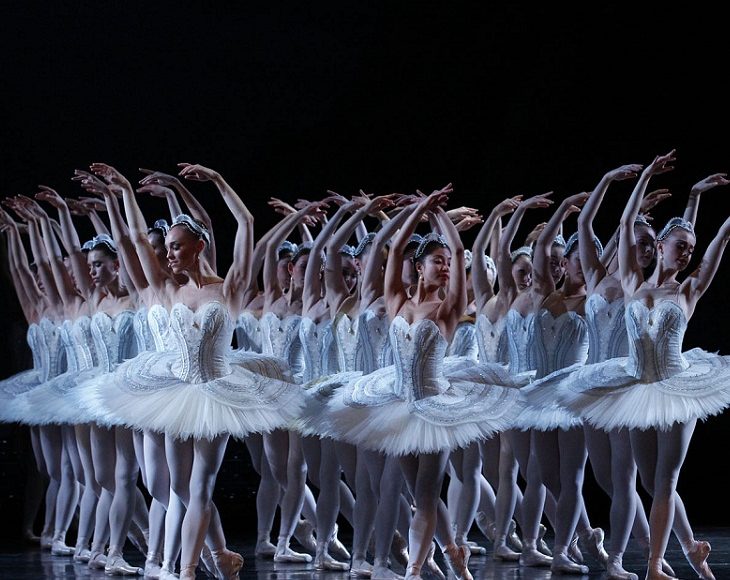9 April 2016 (matinee), Joan Sutherland Theatre, Sydney Opera House
Stephen Baynes’ Swan Lake premiered in 2012 as a ‘traditional’ Australian Ballet production to stand alongside Graeme Murphy’s rather more radical version. After almost four years it is certainly an interesting experience to see the Baynes production again, but looking back at what I wrote in 2012 I find myself wanting to say much the same.
On the positive side, Hugh Colman’s costumes are still a highlight. They are so elegantly designed, especially those in Act I, where the women’s dresses not only look so stylish but move beautifully during the danced sequences. They also set the story so well in the nineteenth century, the era of Tchaikovsky. Then I was still thrilled to see such lovely, swirling choreography in so many places. I was especially taken this time with the patterns given to the swans, both when moving and when standing motionless. I was also lucky to see a lovely performance from Miwako Kubota as Odette/Odile. She danced both roles with style and technical assurance and gave each role a distinctive characterisation.
Baynes and Colman have approached the story as a kind of psycho-drama and, in bringing out this aspect of the production, Andrew Killian as Siegfried gave a strong performance. He gave the role a brooding quality in Act I that at first made him appear not to be participating—and of course we are used to seeing Siegfried enjoying himself at his birthday celebrations before heading off to shoot swans with his mates. But slowly Killian brought us to the realisation that Siegfried was deeply unhappy with his life and at the end of Act I, as he stood before the gates that led to the lake, I couldn’t help feeling that he was thinking of drowning himself in it (which is eventually what happens).
On the not so positive side, I think this Swan Lake still badly needs the services of a dramaturg to bring out the narrative (or Baynes’ version of the story) more clearly. The psycho-drama seems to fall apart somewhat after Act I when the ballet reverts to the original storyline without enough emphasis on anything that might be called evil. Rothbart, who personifies evil in traditional productions, still remains an enigma in the Baynes version. Is he the personification of the blackness that consumes Siegfried? He seems just to hover in the background, except in Act III when he rudely sits beside the Queen, who on this occasion, surprisingly, took very little notice of him. And then Rothbart plays the violin for the the dance of the Russian Princess (beautifully performed by Rina Nemoto), which makes him a kind of Paganini figure, the Devil’s minion. It is very difficult to reconcile exactly what role he is meant to be playing and, as a result, the production becomes unsatisfying.
Despite some very nice choreographic moments, and some strong dancing, I have to come to the conclusion that I prefer other productions of Swan Lake. I don’t want to go back to a Borovansky-style 1950s production (although it was really quite a good, straightforward one), and all credit to David McAllister for wanting to add a traditional Swan Lake to the Australian Ballet repertoire. But for preference I’d go to the Murphy production any day. It has a coherence that I think is lacking in the Baynes production.
Michelle Potter, 11 April 2016
Featured image: Artists of the Australian Ballet in Stephen Baynes’ Swan Lake (2012 production). Photo: © Jeff Busby

